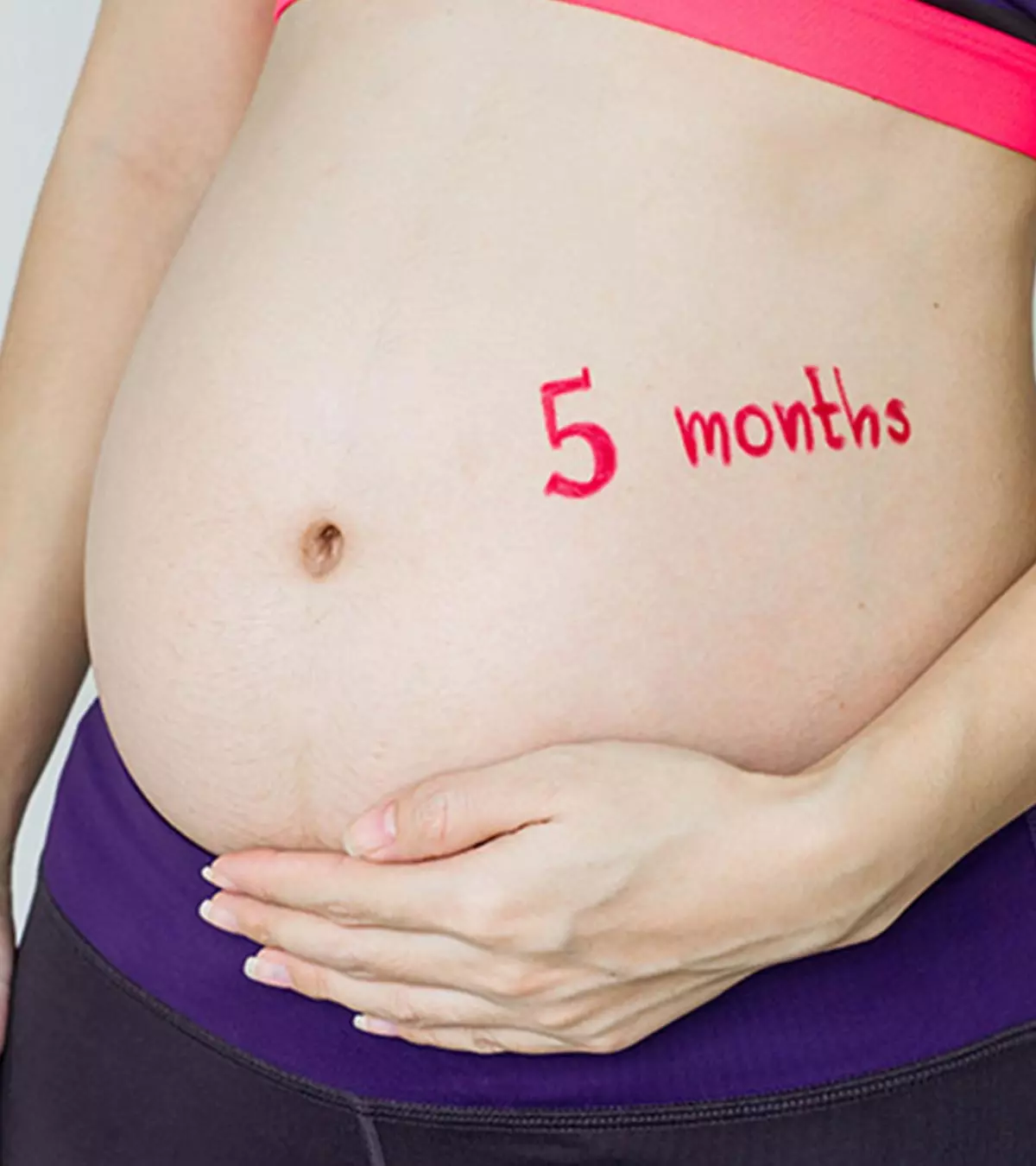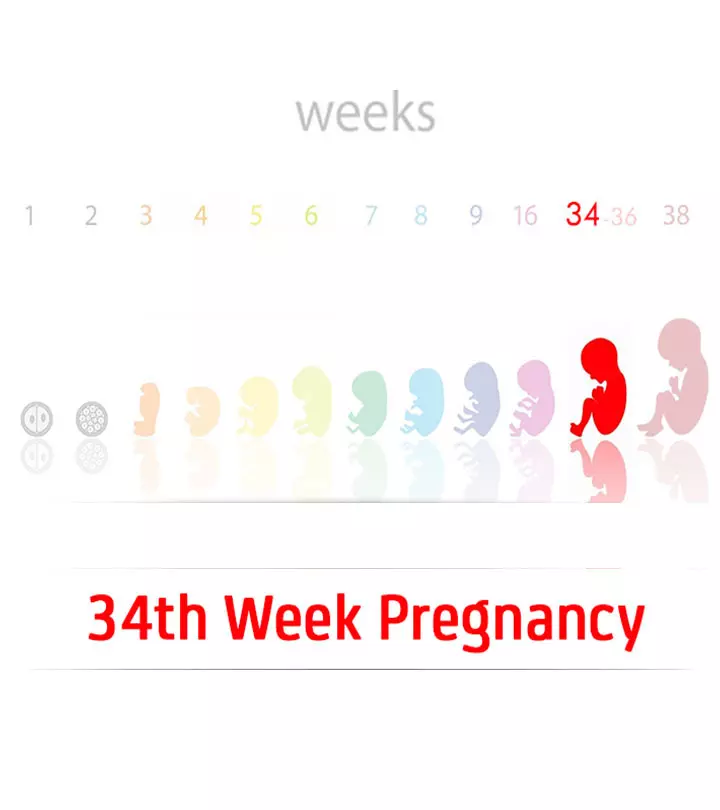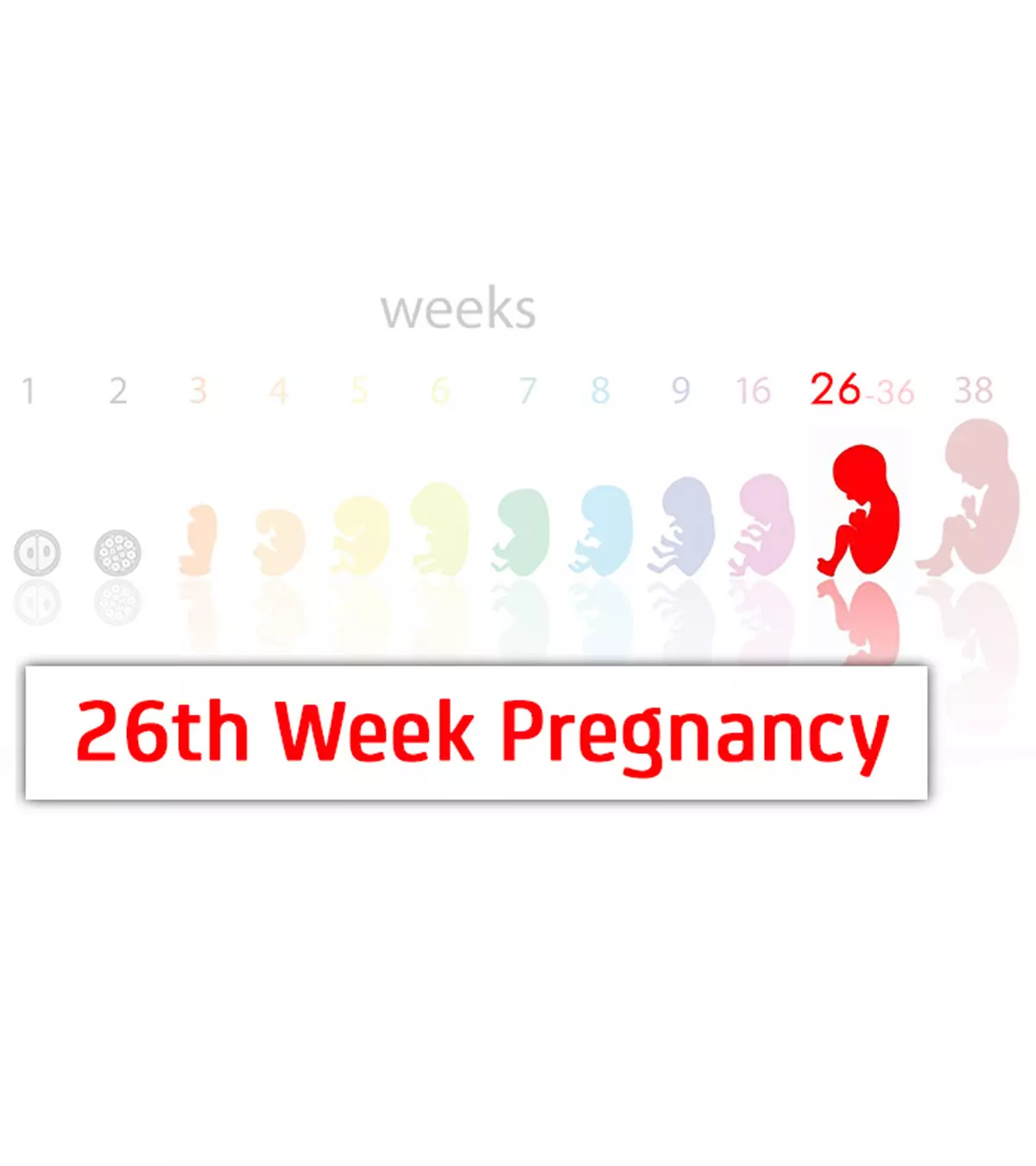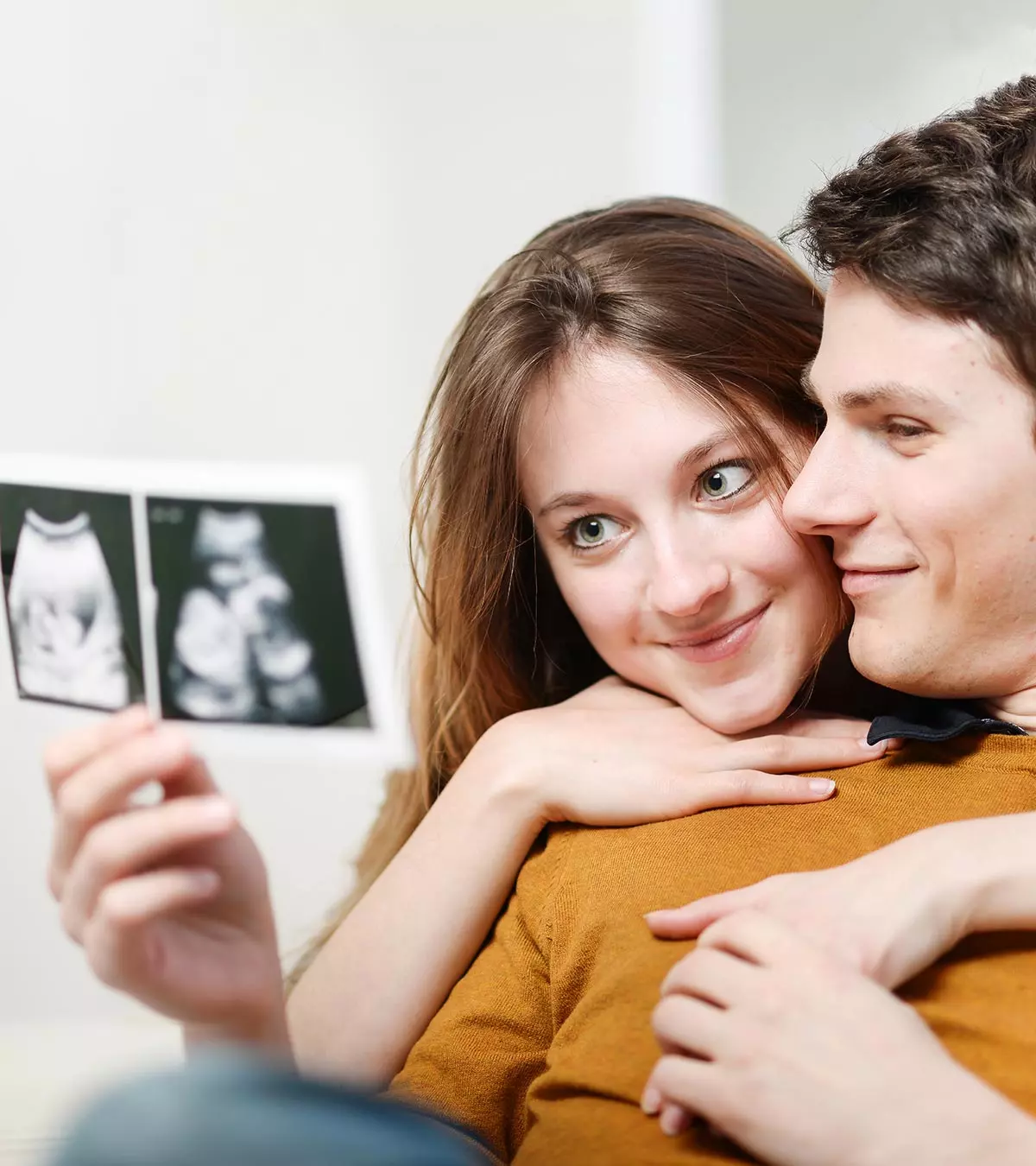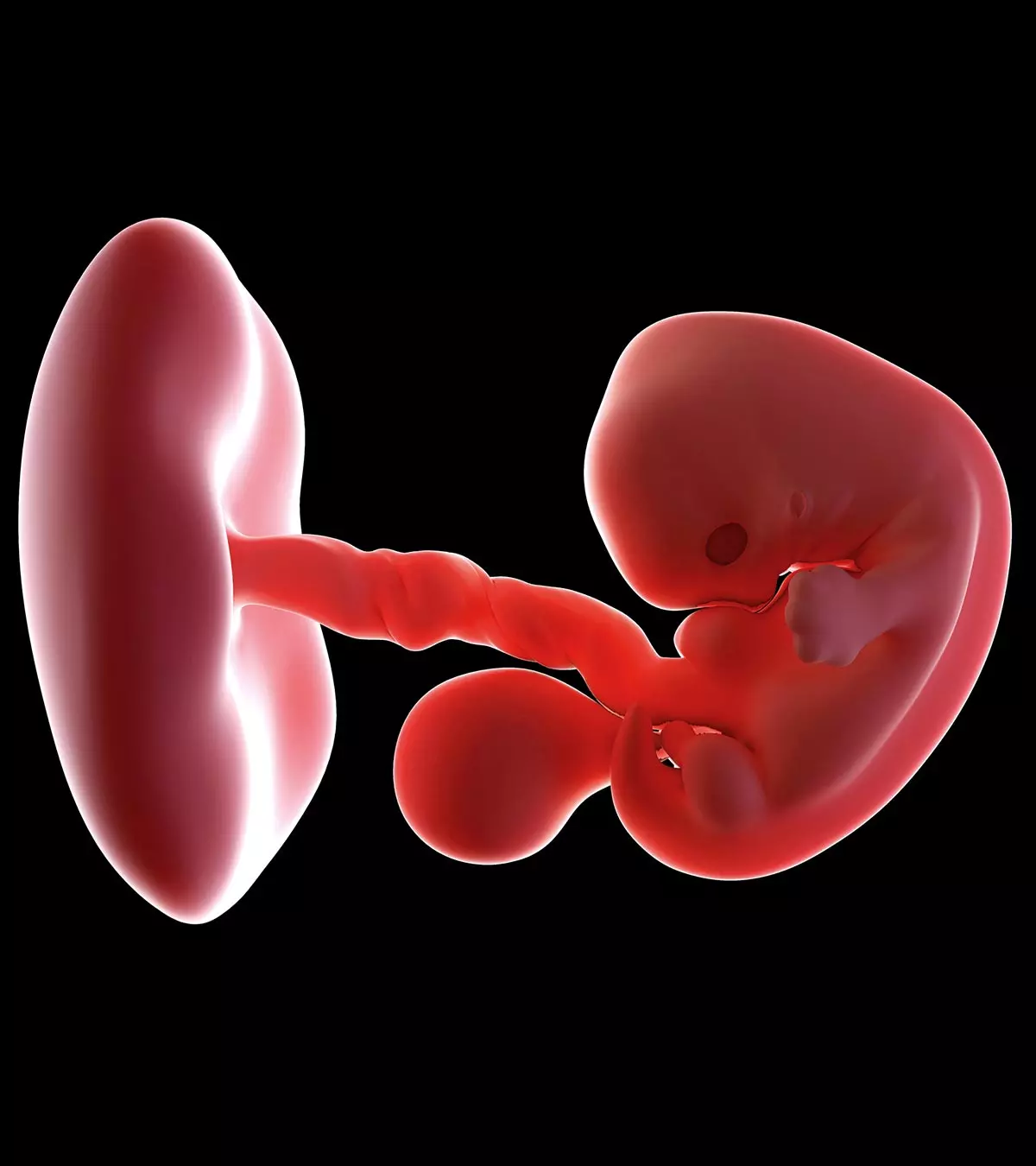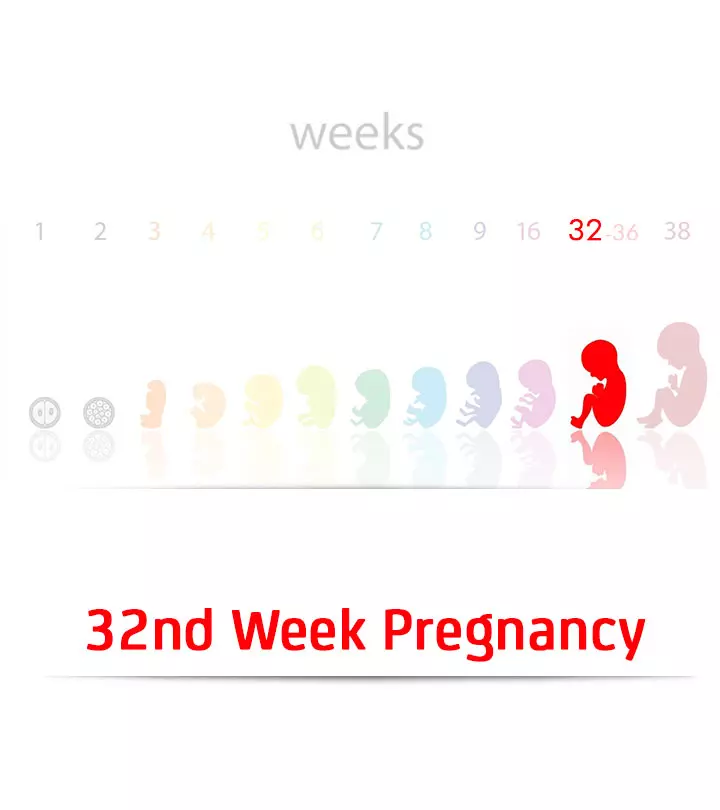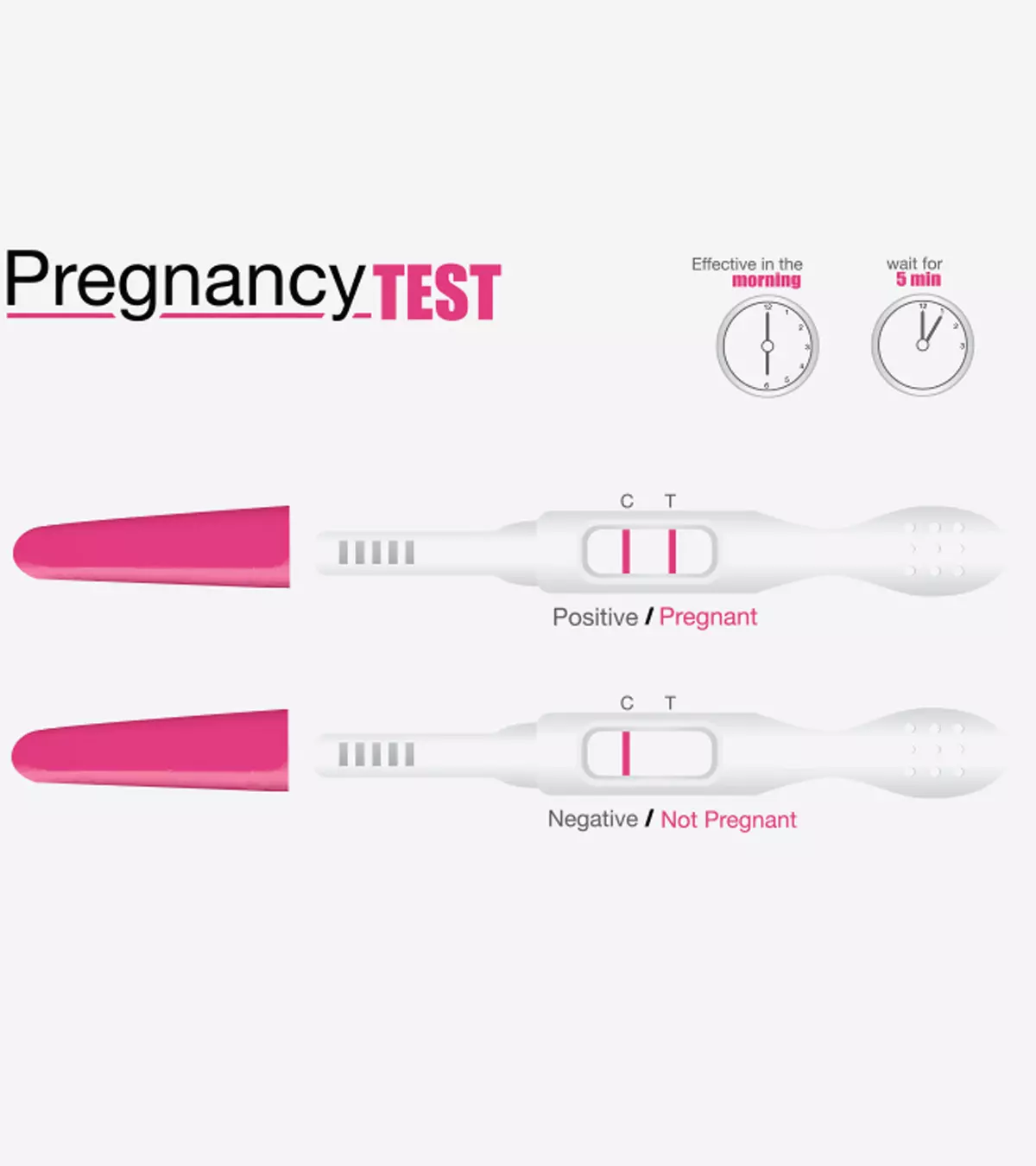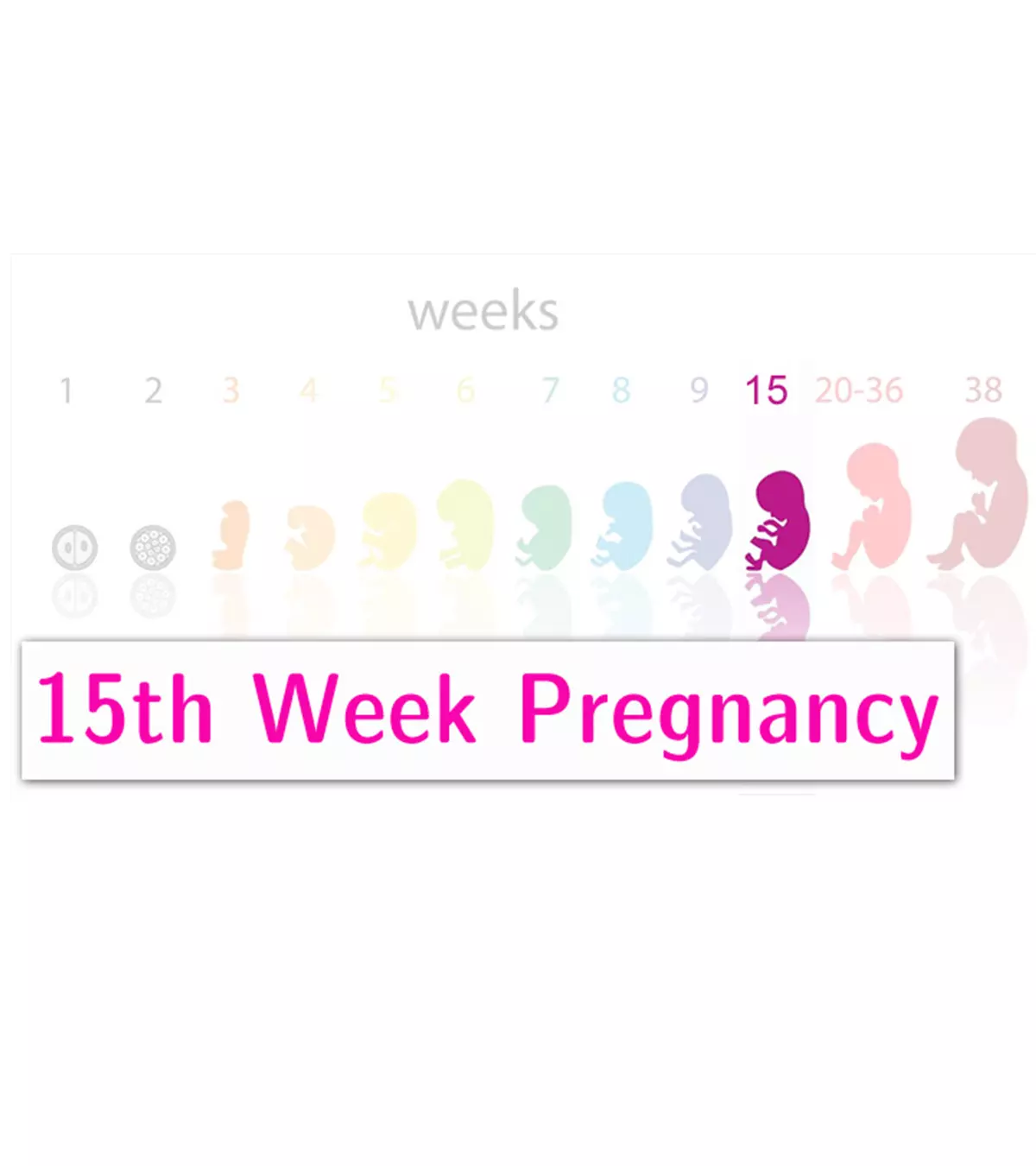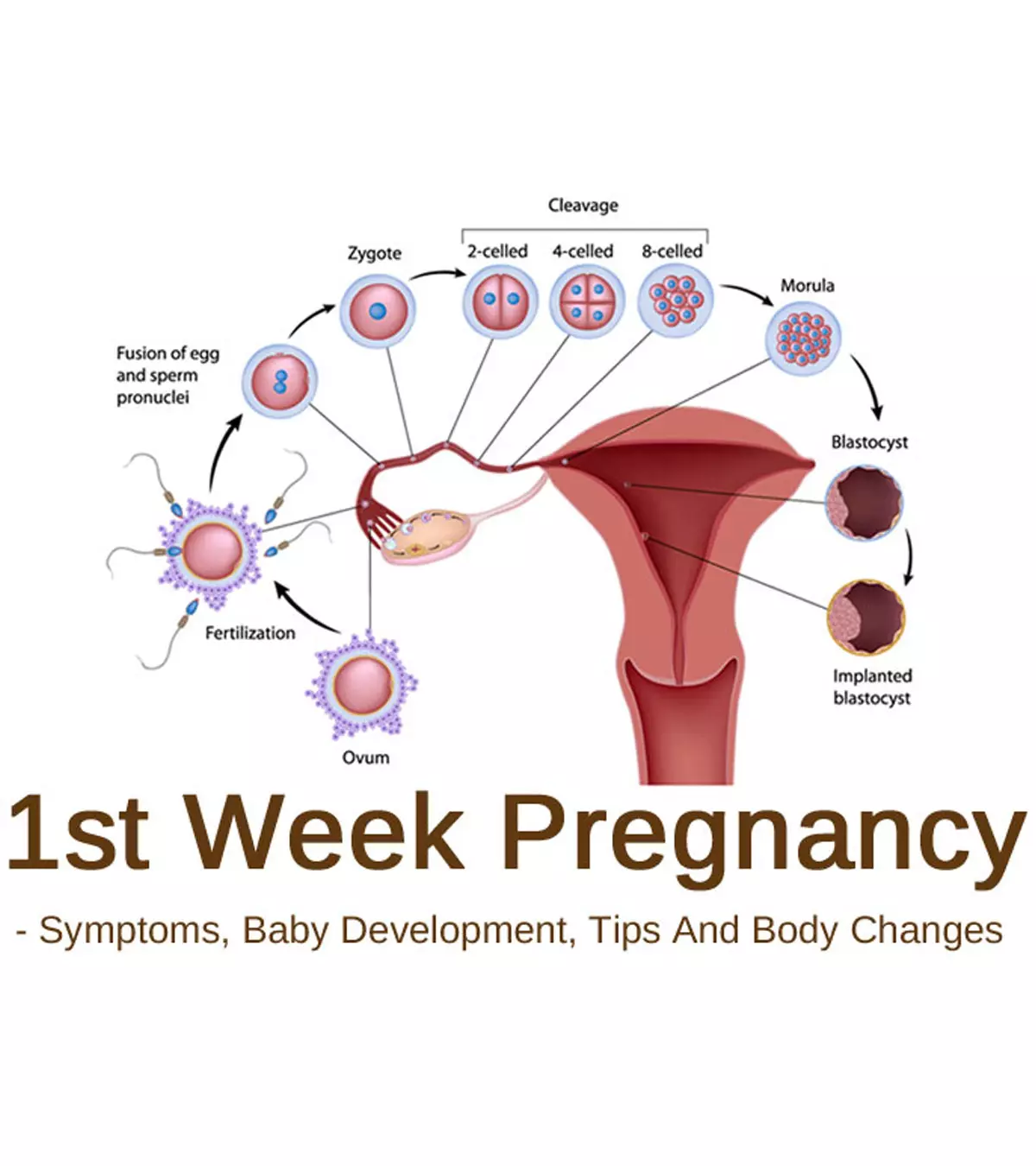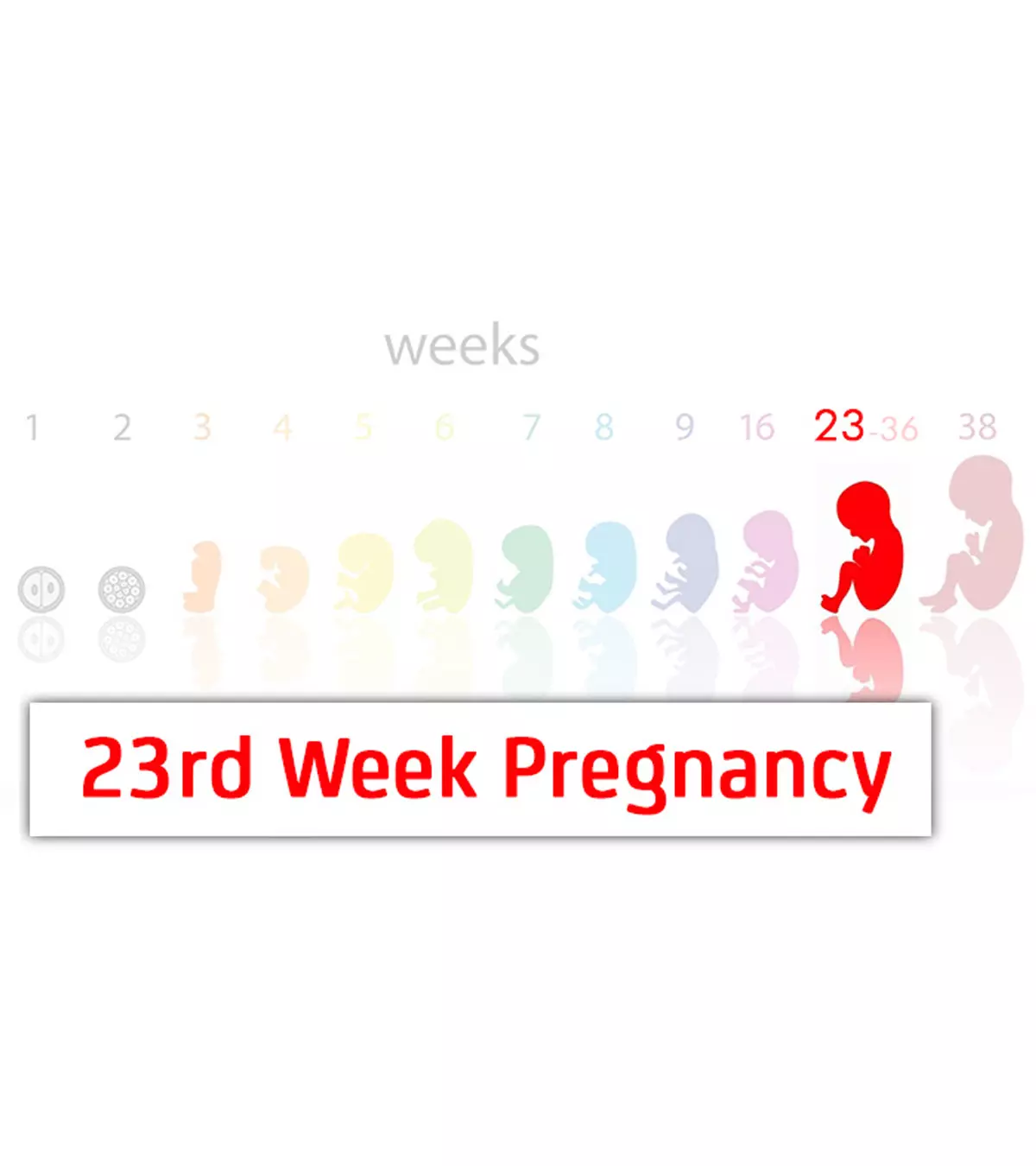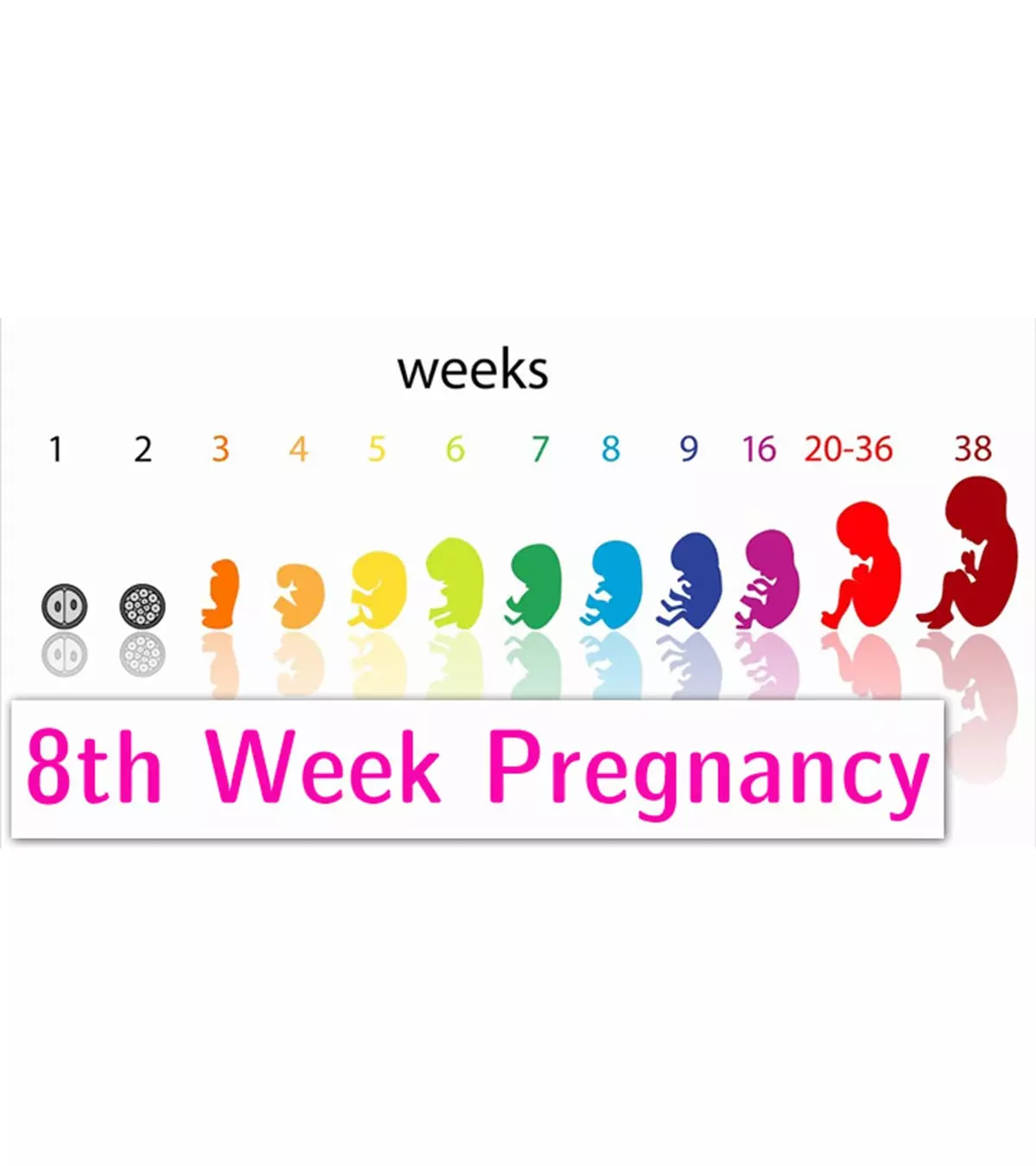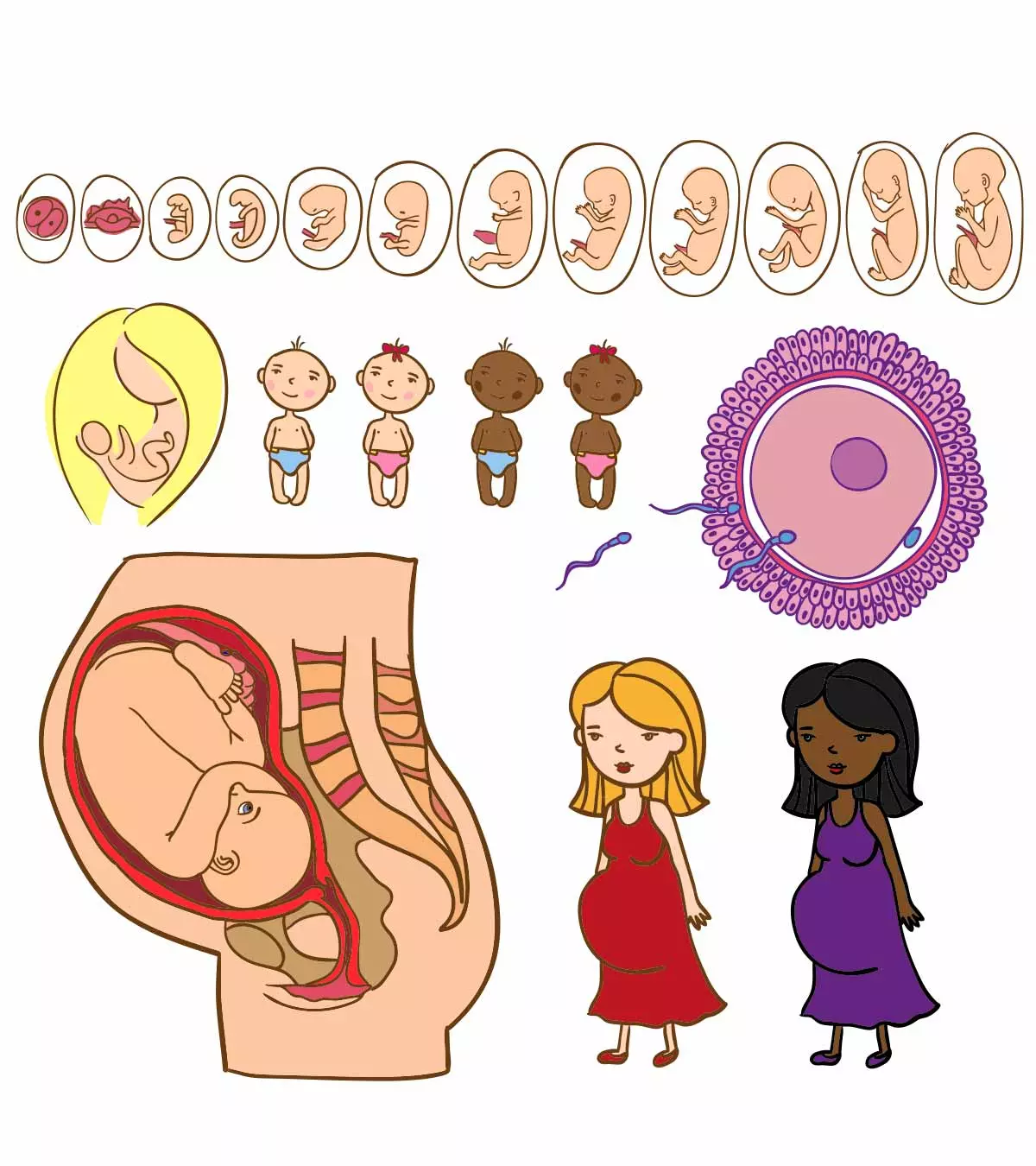
Image: ShutterStock
Although there are many stages of pregnancy, the journey begins on the first day of the last menstruation. Most women do not realize the changes in their bodies until they miss their period or perform a home pregnancy test in the second month. Pregnancy is a beautiful time accompanied by various physical, hormonal, and emotional changes. Every woman should know about how pregnancy begins, progresses, and ends to stay healthy and happy. In this post, we explain the various stages of pregnancy in detail. We also tell you about the changes you may undergo and how the fetus grows.

Key Pointers
- The beginning of pregnancy is marked by the first day of the last menstrual cycle. Throughout pregnancy, the body undergoes several changes to nurture the growing fetus.
- Ovulation, fertilization, and implantation are the key processes that lead to conception, which can be confirmed by measuring the beta hCG levels in the urine.
- The first trimester is marked by key developmental processes for the fetus such as formation of skin, bones, muscles, circulatory and digestive systems. The expecting mother may experience early pregnancy symptoms during this stage.
- The second trimester of pregnancy is marked by the development of kidney functioning, bowel functioning, and development of lungs, taste buds, and genitals. While the expecting women may experience back pain, swollen extremities, and frequent urination, during this period.
- By the end of the third trimester, the fetus has attained full growth with completely developed organ systems. During this period, the mother may experience heartburn, Braxton hicks contractions, and other pregnancy-related symptoms.
Stages Of Pregnancy
1. Conception:
You take the first step towards gestation when an egg in your body is fertilized by sperm, this is the moment of conception. Let’s see the developments at this stage (1). We have broken them into steps for easy-understanding.

Step 1: The process of conception starts with the release of a group of eggs from the ovary every month. These eggs develop into a fluid-filled cyst called follicles, among which only one follicle goes for maturation. Other follicles get degenerated.
Step 2: At the time of ovulation, the follicle breaks open to release the egg. The ruptured follicle turns into corpus luteumiA temporary structure crucial for fertility and release of progesterone hormone that prepares the uterus for pregnancy , which starts producing progesterone and estrogen hormone. Progesterone begins preparing the endometrium liningiA lining of the uterus where the embryo implants after the fertilization process for a possible pregnancy.
Step 3: If the egg meets the sperm, then fertilization happens, and a zygoteiA cell formed after the union of an egg and a sperm during fertilization forms. It slowly moves into the fallopian tube over a few days and gets continuously divided into multiple cells.
Step 5: If the zygote does not implant on the uterine wall, it naturally passes out of the body, and is expelled by having a period. But if it implants on the uterine wall, then it marks the beginning of your pregnancy.
Step 6: You can know about your pregnancy when you miss your next period and take a test. The urine test detects the pregnancy hormone human chorionic gonadotropin (hCG). The hCG levels are undetectable initially but they keep growing from the time of your conception.
The hCG hormone will be present in the blood at a detectable level by around ten days after conception. However, to confirm pregnancy through a urine test, it will take two more weeks to get a detectable amount of hormone in the urine (2).
The pregnancy period is divided into three trimesters with each trimester having 12-13 weeks in it.
First Trimester (Week 1 to 12)
Conception is a part of the first trimester. Week one of the first month is generally the period of the menstrual cycle. Ovulation is likely to happen on the 14th day or by the end of the second week (in a 28-day cycle).
Changes in the mother:
Below are the early pregnancy symptoms you might experience:
- Fatigue
- Nausea
- Vomiting
- Swollen breasts
- Mood swings
- Frequent urination
- A headache
- Food and smell aversion
- Constipation
- Weight gain or loss
Some of these symptoms will continue until the third trimester. But it is common to feel more tired during the first trimester as the body is working overtime to support the fetus.
Changes in the embryo:

Month 1
- The first month marks the conception with the implantation of the zygote on the uterine wall
- Some of the multiplying cells develop into a baby while the rest form the placenta that nourishes the baby
- The heartbeat begins by the 21st day and the spinal cord, nerves, and muscles start developing by the fourth week (3)
Month 2
- As you enter the second month, the tiny life is no more called a zygote but an embryo, which is just a fraction of an inch long
- The heart and a basic blood circulatory system are in place
- Pancreas, liver, and stomach are formed
- The limb buds are distinct now
- By the end of this month, all the facial features start developing (4)
Month 3
- Starts developing muscles and bones, tooth buds, and fingers and toes. After ten weeks, the baby is called a fetus
- By week 12, the fetus will measure around 3in and weigh an ounce
- The skin is transparent
- Eyelids are closed
- Muscles and nerves are developing
Second Trimester (weeks 13-27)
marks the crucial development of the fetus during the fourth, fifth, and sixth months.
Changes in the mother:
By this trimester, you might feel a difference in the level of your pregnancy symptoms. There will be more energy and the body gets adjusted to the changing hormonal levels. Some symptoms include:
- The bump begins to show
- Pregnancy glow
- You might have pelvic pressure and back pain
- Stretch marks
- Darkening of areola
- Linea nigra
- Swelling of ankle, feet, and face
- The initial fetal movements, called the quickening, can usually be experienced between the 16th and 20th weeks (5). Later, the frequency of movements increases and you can feel the baby kicking, squirming, and turning in the womb
Changes in the fetus:
During this trimester, the fetus will measure 3 to 5in and weigh around 3oz.
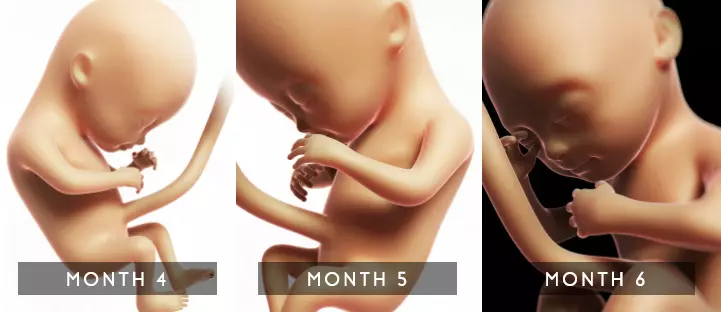
Month 4
- Begins to suck with the mouth
- The eyebrows, eyelashes, and fingernails have grown
- Fingerprints are evident
- The skin has a wrinkled appearance
- The kidneys start functioning by producing urine
- Sex determination is possible by this month through an ultrasound scan
- Bowel movements start and meconium is produced in the intestinal tract
Month 5
- Measures 6in and 9oz
- The movements become more distinct and frequent
- The skin develops fine hair called lanugo and a waxy coating called vernix for protecting and covering the thin skin
- Can start hearing and swallowing
Month 6
- Measures around 12in and weighs about 2lb
- The bone marrow begins formation of red blood cells
- Taste buds are formed
- Lungs develop but not completely
- The eyes begin to open and the hair starts growing
- Develops reflexes
- Genitals are developing faster with boys having testicles descending into scrotum and girls having ovaries with eggs for a lifetime
 Point to consider
Point to considerThird trimester (week 28-40)
By the third trimester, the changes in your body are more visible and the baby is attaining full growth.
Changes in the mother:
The uterus outgrows the pelvis and puts pressure on your diaphragm causing difficulty in breathing.
- Water retention in the body causes swelling of ankles, feet, and face
- The frequency of urination increases as the growing uterus puts pressure on the bladder
- Pelvic, hip, and backache increase by this trimester because the joints start relaxing as a part of the preparation for delivery
- Some women may experience leakage of fluid, called colostrum, from the breasts
- Shortness of breath
- Difficulty sleeping
- Heartburn
- Braxton Hicks contractioniTemporary and false uterine contractions that may during pregnancy as the due date approaches
With the approaching due date, the baby moves down into the pelvis and the cervix starts thinning (cervix effacement).
 Quick fact
Quick factChanges in the fetus:

Month 7
- Measures around 15 to 17in and weighs 4 to 4 ½ lb
- The eyes start to open and close; can respond to the light from outside and hear and recognize voices
- Breathing motions start although the lung is not fully developed
- Skeleton is fully formed
- Starts stretching the limbs
- Fats start depositing under the skin
- The kicks are more forceful
- Lanugo starts to fall
Month 8
- Starts gaining weight quickly
- The bones become harder but the skull remains soft to help the baby pass through the birthing canal
- The fetus measures 16 to 18in and weighs around 6lb
- More fat is deposited beneath the skin
Month 9
- Measures around 19-21in and weighs around 9lb
- All the organs are completely developed
- Will start moving to the optimal position and settle down there until the labor starts
- The delivery can be expected anywhere between the 37 and 42 week
Labor
The last stage of pregnancy is labor when you are anticipating the arrival of your little one in this world. There are three stages of labor (6):
Stage 1: It starts with prelabor, which can feel like period pain and cramping and builds up to strong regular contractions, and gets closer and longer gradually. The contractions will be felt for 60-90 seconds, every two to three minutes. The amniotic sac will rupture, followed by the release of the amniotic fluid, and the cervix will dilate to make way for the baby.
Stage 2: The cervix dilates to 10cm and the contractions become stronger. As the uterus contracts, you will push down the baby into the birthing canal. During this process, the baby’s head will come out first through the vaginal opening and is called ‘crowning’.
Stage 3: The baby is born but the contractions are not yet over. In a few more pushes, the placenta will come out after getting detached from the uterine wall. It can take up to an hour for the placenta to be born.
After the baby is born it will be put on your chest, the umbilical cord will be clamped, and the mother can start breastfeeding. This helps with the delivery of the placenta and also helps in contracting the uterus and slowing down the blood flow.
Frequently Asked Questions
1. How many weeks is two months of pregnancy?
If you have completed your two months of pregnancy, you may be nine weeks pregnant (7).
2. What does vaginal discharge look like during pregnancy?
Women experience more vaginal discharge during pregnancy. Towards the end of the pregnancy, the discharge increases so much that you may confuse it with urine. This may happen due to an increased progesterone level (8).
3. Which part of the breast hurts during early pregnancy?
Your entire breast may feel tender and hurt during early pregnancy due to the changes in your body’s hormones (9).
4. What are the stages of embryonic development?
The stages of embryonic development are (10) (11):
- The fertilization leads to the formation of zygote
- The zygote changes into a 16-celled ball called the morula
- The morula transforms into a blastocyst or blastula
- The blastula undergoes gastrulation to form a gastrula
- Gastrulation leads to neurulation for the development of the nervous system
- Finally, organogenesis occurs, leading to the development of organs
5. What are the stages of implantation?
There are three stages of implantation (12):
- Apposition: Blastocyst contacts the site of implantation on the endometrium
- Adhesion: Blastocyst attaches to the endometrial epithelium
- Invasion: Trophoblast cells of blastocyst invade the endometrial stroma
6. How can I stay safe and healthy during pregnancy?
The stages of pregnancy may be smoother with proper self-care and timely medical guidance. Regularly consult your healthcare provider, take prenatal supplements as directed, stay hydrated, avoid alcohol and nicotine, exercise consistently, and maintain a balanced diet of vegetables, whole grains, proteins, and fruits to support a healthy pregnancy.
The first day of your last menstrual cycle is the first day of your pregnancy. That’s when a woman’s body undergoes several changes, which persist through all stages of pregnancy. It begins from conception when the egg is released to implantation and continues till labor. As the baby develops in every stage, the mother keeps experiencing different symptoms. The stages of pregnancy may end, but the journey of parenthood is lifelong and the most rewarding experience you will cherish all your life.
Infographic: What Are The Stages Of Conception In Pregnancy
Conception, also known as fertilization, is the process by which a woman becomes pregnant. The stages of conception and early pregnancy involve a complex series of events. Learning about these stages in the infographic below to better understand how pregnancy occurs.
Some thing wrong with infographic shortcode. please verify shortcode syntax
Illustration: Stages Of Pregnancy: Month-By-Month Development & Changes

Image: Stable Diffusion/MomJunction Design Team
Exciting and overwhelming, having a baby is a journey of nine months. Learn about the stages of pregnancy and what to expect with this beautiful and informative video.
References
- Pregnancy at weeks 1 to 4.
https://www.pregnancybirthbaby.org.au/pregnancy-at-week-1-4 - hCG levels.
https://www.pregnancybirthbaby.org.au/hcg-levels - Embryonic and fetal development.
https://scdhec.gov/sites/default/files/Library/ML-017049.pdf - Fetal developmental timeline.
https://wisconsinrighttolife.org/fetal-development-timeline/#1642430158807-674e7a76-e247 - Hatice Akkaya and Barış Büke; (2018); A frequently asked question: Is it normal not to feel my baby’s movements yet?
ttps://www.sciencedirect.com/science/article/pii/S1726490117302794 - Stages of labor.
https://www.nichd.nih.gov/health/topics/labor-delivery/topicinfo/stages - Baby Development Month by Month.
https://americanpregnancy.org/healthy-pregnancy/week-by-week/baby-development-month-by-month/ - Vaginal discharge during pregnancy.
https://www.pregnancybirthbaby.org.au/vaginal-discharge-during-pregnancy - Breast Changes During Pregnancy.
https://americanpregnancy.org/healthy-pregnancy/changes-in-your-body/breast-changes-during-pregnancy/ - Jeremy Muhr and Kristin M. Ackerman; (2025); Embryology Gastrulation.
https://www.ncbi.nlm.nih.gov/books/NBK554394/ - Embryonic Stage.
https://bio.libretexts.org/Bookshelves/Human_Biology/Human_Biology_(Wakim_and_Grewal)/23%3A_Human_Growth_and_Development/23.3%3A_Embryonic_Stage - Su-Mi Kim and Jong-Soo Kim; (2017); A Review of Mechanisms of Implantation.
https://www.ncbi.nlm.nih.gov/pmc/articles/PMC5769129 - Pre-eclampsia.
https://www.nhs.uk/conditions/pre-eclampsia/ - Pregnancy: The Three Trimesters.
https://www.ucsfhealth.org/conditions/pregnancy
Community Experiences
Join the conversation and become a part of our nurturing community! Share your stories, experiences, and insights to connect with fellow parents.
Read full bio of Jules Brooks
Read full bio of shreeja pillai
Read full bio of Rebecca Malachi
Read full bio of Dr. Joyani Das





